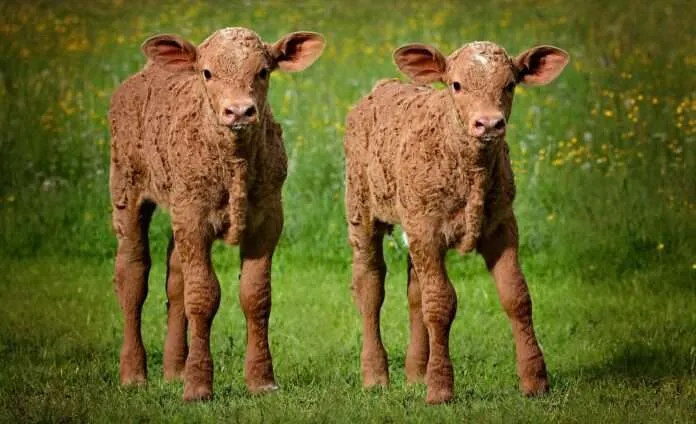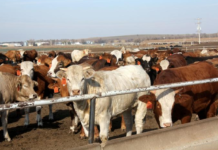K-State beef cattle experts discuss the dietary needs of first calf heifers and the importance of water to nursing calves
MANHATTAN, Kan. — Each season of the year brings management considerations for the beef producer. For summer, two groups in the herd – first calf heifers and young calves – need special attention, according to experts at Kansas State University’s Beef Cattle Institute.
“First calf heifers need a lot of extra care because they are still growing while caring for a calf and can easily become too thin going into late summer and fall,” said Phillip Lancaster, BCI nutritionist, on a recent Cattle Chat podcast.
He estimates that these females are only about 80% of their mature weight when they have their first calf. Therefore, he suggests these pairs be grouped together and fed separately from the mature cows and their calves.
“Keeping the first calf heifers in good body condition is important for rebreeding,” Lancaster said.
He added that there are some economic benefits as well.
“Making sure the heifers and those who just had their first calf are properly taken care of nutritionally can be a cost savings versus having them drop out of the herd because they wouldn’t breed on time and having to buy replacements,” Lancaster said.
Along with supplementing the diets of growing animals, providing amble access to fresh water is important for all, said K-State veterinarian Brian Lubbers.
“Water is the most important nutrient in the diet and one that is often given the least consideration,” he said.
Along with providing access to clean water for the heifers, cows and bulls, Lancaster said it is also important for nursing calves.
“When calves nurse, there is a reflex reaction that allows the milk to bypass the rumen and go through the stomach to the small intestine,” he said. “Water is important because once the calf starts adding grass and grain in the diet liquid is needed in the rumen to allow mixing of forage and feed better aiding in digestion.”
Calves typically start eating grass about one month of age. Once the cow passes peak lactation 60-days post calving, grass consumption by the calves increases, according to Lancaster. At that point, some producers offer creep feed to the growing calves as well.
To hear more of the discussion on these two topics tune in to the Cattle Chat podcast online.
FOR PRINT PUBLICATIONS: Links used in this story
BCI Cattle Chat podcast, https://ksubci.org/2021/06/04/hoof-care-water-quality-kansas-farm-bureau-first-calf-heifers/
K State Research and Extension is a short name for the Kansas State University Agricultural Experiment Station and Cooperative Extension Service, a program designed to generate and distribute useful knowledge for the well being of Kansans. Supported by county, state, federal and private funds, the program has county extension offices, experiment fields, area extension offices and regional research centers statewide. Its headquarters is on the K State campus in Manhattan. For more information, visit www.ksre.ksu.edu. K-State Research and Extension is an equal opportunity provider and employer.
Story by:
Lisa Moser
785-532-2010
[email protected]
More information:
Phillip Lancaster
785-532-6323
[email protected]
Brian Lubbers
785-532-4012
[email protected]
Brad White
785-532-4243
[email protected]





